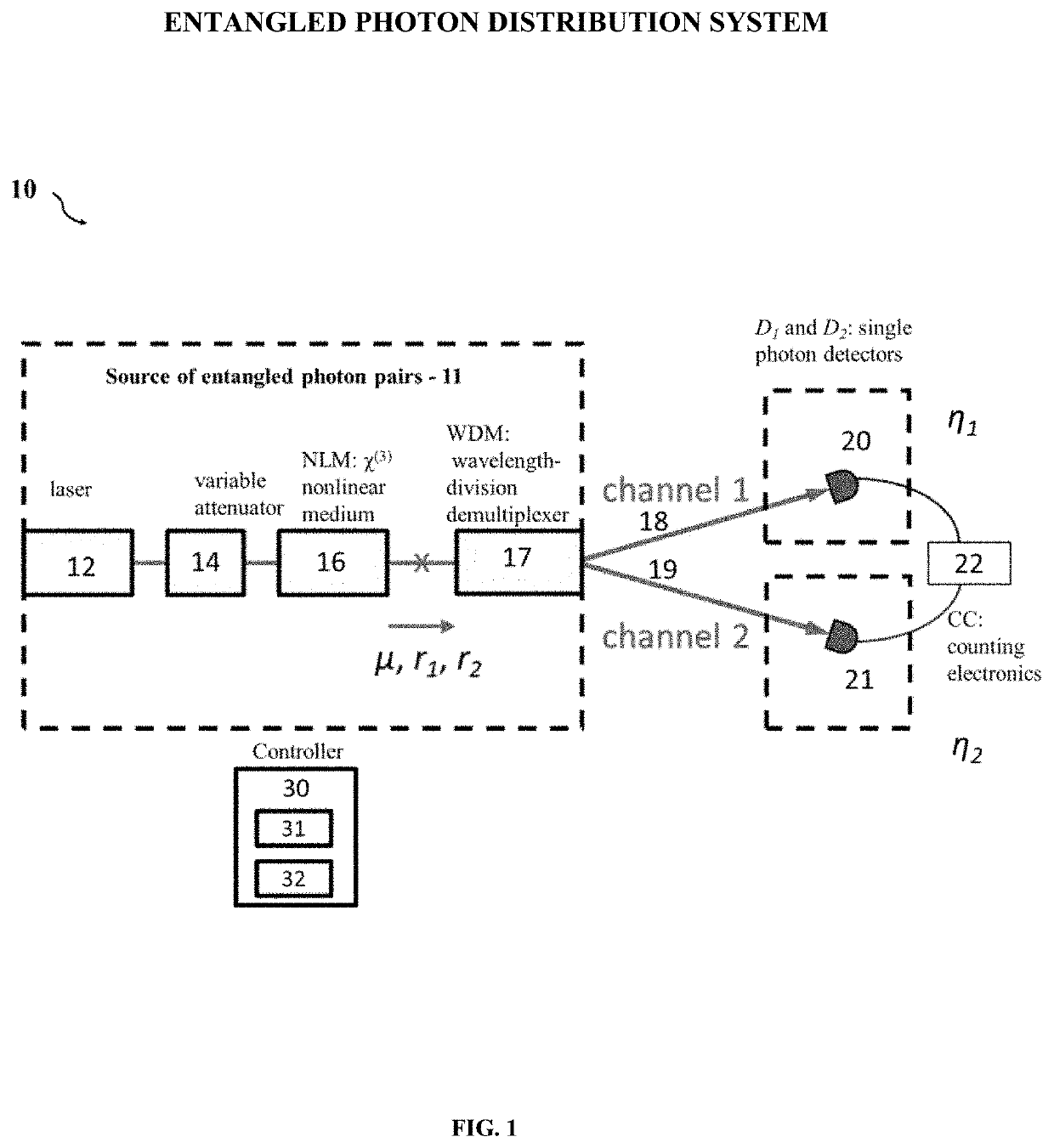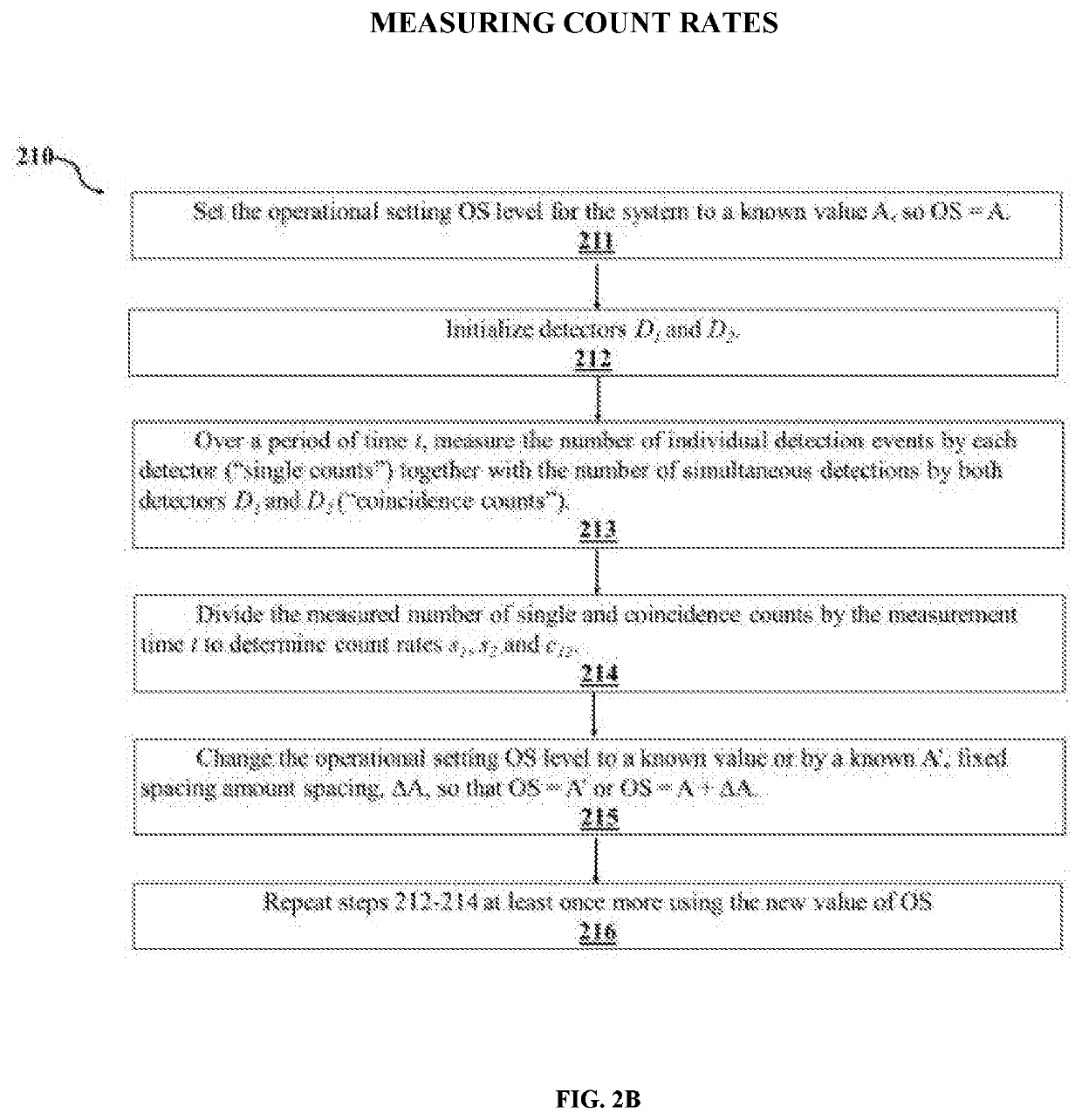Methodology for in situ characterizing and calibrating an entangled photon distribution system
a technology of entangled photons and distribution systems, applied in the field of in situ characterization and calibration of entangled photon distribution systems, can solve the problems of reducing the usefulness of the created entangled photons, reducing the effect of the system's performance, and additional difficulties in characterizing the source and its detectors, so as to achieve the effect of disassembly and reassemble the system
- Summary
- Abstract
- Description
- Claims
- Application Information
AI Technical Summary
Benefits of technology
Problems solved by technology
Method used
Image
Examples
Embodiment Construction
[0028]Embodiments of the present invention are directed to a novel methodology for in-situ characterizing and calibrating entangled photon distribution systems. Specifically, the methodology simultaneously determines various operational parameters of the system. Characterization and calibration of the system is achieved in-situ.
[0029]A key aspect of this methodology is the use of measurements of the single and coincidental count rates of two detectors of the system using different photon source settings, i.e., laser pump power or attenuation levels, as measurements of the probabilities of detection of single and coincidental photons of the two detectors. The inventors have found that as few as two of the photon count rate measurements at different setting levels are generally sufficient to fully characterize the system. Preferably, at least one measurement is performed with an operational setting level in the high power regime.
[0030]The measured count rates for the at least two diff...
PUM
| Property | Measurement | Unit |
|---|---|---|
| zero-dispersion wavelength | aaaaa | aaaaa |
| time | aaaaa | aaaaa |
| time | aaaaa | aaaaa |
Abstract
Description
Claims
Application Information
 Login to View More
Login to View More - R&D
- Intellectual Property
- Life Sciences
- Materials
- Tech Scout
- Unparalleled Data Quality
- Higher Quality Content
- 60% Fewer Hallucinations
Browse by: Latest US Patents, China's latest patents, Technical Efficacy Thesaurus, Application Domain, Technology Topic, Popular Technical Reports.
© 2025 PatSnap. All rights reserved.Legal|Privacy policy|Modern Slavery Act Transparency Statement|Sitemap|About US| Contact US: help@patsnap.com



